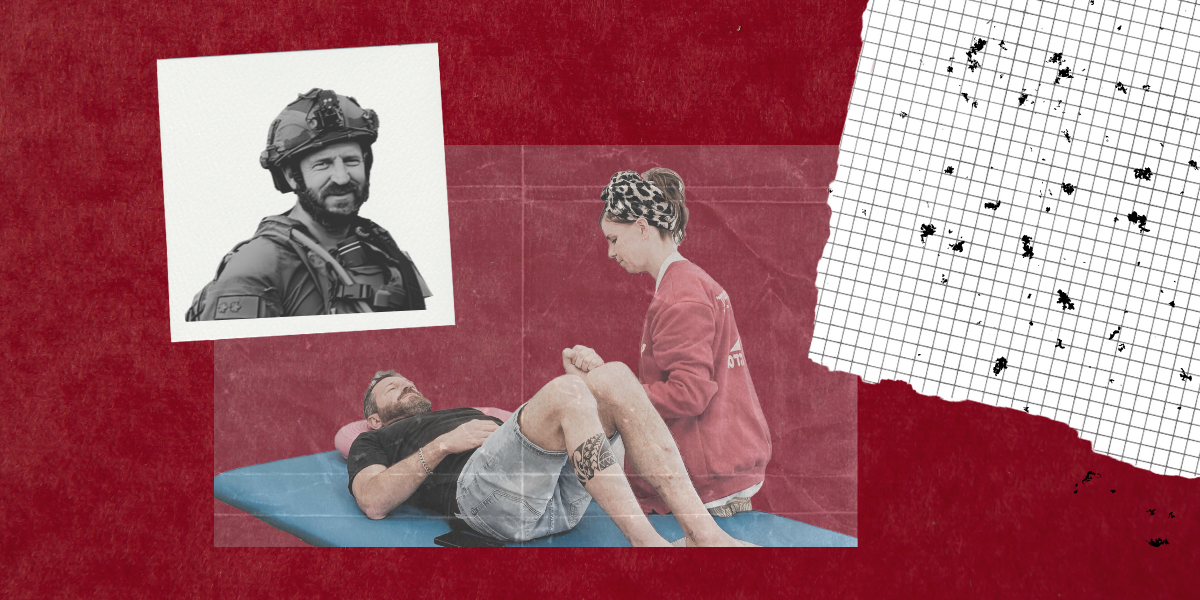Health + Medicine
Hadassah Transforms Health Care During Wartime

The world changed on October 7, and with it, the medical landscape. Israel’s hospitals mobilized to provide critical care to those ambushed by terror and war—with the Hadassah Medical Organization in Jerusalem a key facility for many severe and complex cases, often adapting approaches and developing breakthrough solutions.
When sirens blared early that October morning, Dr. Meir Liebergall, longtime director of orthopedics at HMO and now head of its orthopedics and spinal rehabilitation department, was in Tel Aviv. “We didn’t yet know the magnitude of what was happening, but it was clearly a mass trauma event,” he said. “With 70 percent of victims of such events sustaining orthopedic injuries, my place was at Hadassah.” He reached Jerusalem in under an hour. The first helicopters landed minutes later.
As in earlier conflicts, at Hadassah, the needs of the injured have spurred new techniques and technologies, including reconstructing shattered joints and bones as well as extracting bullets.
Among the medical departments that have seen significant innovations is orthopedics, specifically personalized orthopedics. Personalized medicine—treatment tailored to the individual—has been around for over 20 years, but it is new to orthopedics. It is also an area where Hadassah excels, using 3-D printing to help replace destroyed bone, cartilage and joints, tailoring them to the unique anatomy of each patient.
CT scans, Dr. Liebergall explained, enable the orthopedics teams to build a digital model of the injured area and then, using the uninjured joint or bone as a template “mirror image,” to measure the exact size and shape of the missing bone. These dimensions are then fed into a 3-D printer, which uses layers of strong yet lightweight and biocompatible titanium to fabricate a replica of the destroyed bone.
Lt. Col. Yonatan Bahat, a 48-year-old reserve brigadier commander, was fitted with a titanium shoulder joint created on a 3-D printer after his shoulder was shattered in Gaza. He had been leading his paratrooper brigade in Gaza City’s Zeitoun neighborhood when a terrorist emerged from a tunnel and shot him at close range. Bahat, who had been in Gaza for 100 days, arrived at the Israel Defense Forces field headquarters in central Gaza with the shattered shoulder as well as heavily bleeding wounds in his chest, arms and legs.
In civilian life, Bahat runs Extreme Simulations, a private company that provides trainings and simulations for disaster and warfare response for the IDF and other organizations. His emergency treatment in Gaza was administered by one of his graduates, a 25-year-old female IDF paramedic. Evacuated under fire, he spent the next 10 days in an induced coma at Hadassah Hospital Ein Kerem. It was five weeks before he was out of danger.
Two and a half months after arriving at Hadassah Ein Kerem, he was transferred to the Gandel Rehabilitation Center at Hadassah Hospital Mount Scopus with an artificial joint in his shoulder. “I’ve spent five months at Gandel, first as an inpatient and now as an outpatient,” he said. “I’ve worked hard, but without the patient-specific help I’ve received, I’d still be lying flat on a bed and unable to lift my arm to brush my own teeth.”
Likewise, Shilo Segev, a 21-year-old soldier in the Givati Brigade, can walk today because of a combination of personalized orthopedics and traditional bone grafting. Shot multiple times while on duty in Gaza’s Jabalia neighborhood, his most serious injury was to his leg. “I was sure I’d lose it,” he recalled.
At Ein Kerem, his knee was temporarily secured with metal pins, carbon rods and clamps while doctors constructed a 3-D printed model of the injured limb. “It showed us severe damage both to the knee and the upper thigh bone,” said Dr. Yoram Weil, head of the Orthopedic Trauma Unit. The crucial pieces of knee joint were printed in titanium, and a section of Segev’s pelvic bone was mapped out to graft into his thigh. With both procedures meticulously simulated on the 3-D printer prior to surgery, the reconstruction took less than two hours.
“I still have a long road, but I’m steadily improving and hope to regain full function,” Segev said.
Along with developing new technologies, Hadassah’s orthopedic surgeons have reversed an existing technique for safe removal of deeply embedded bullets and shrapnel. For the past decade, Dr. Josh Schroeder, head of HMO’s spinal deformities surgery department, has used surgical robots to pinpoint to the millimeter where to insert tiny spinal screws to stabilize and align damaged vertebrae. A year ago, with colleagues Drs. Liebergall and Leon Kaplan, he began utilizing the robot to remove objects rather than implant them.
His first such patient from the Israel-Hamas war was a soldier with a bullet lodged in his sacrum, the bone connecting the spinal column to the pelvis. “Left in place, it would affect the nerves to his legs or cause lead poisoning, so it had to come out,” Dr. Schroeder explained. “He was transferred to Hadassah Ein Kerem from another hospital that was equipped only for open spinal surgery, which would take half a day. Our minimally invasive procedure was over in 90 minutes.”
A surgical robot was programmed using CT scans and fluoroscopic images. It calculated exactly where the surgeons should enter the soldier’s back to extract the bullet, avoiding damage to nearby nerves, vessels and organs.
“The perfect trajectory plotted by the robot has also helped us repair spinal fractures, extract bullet fragments and treat many other injuries since October 7 in this minimally invasive way,” Dr. Schroeder said.
Whether with robots and 3-D printers or using traditional techniques, Hadassah physicians and researchers remain at the forefront of transforming health care, in peace and in war.
Wendy Elliman is a British-born science writer who has lived in Israel for more than five decades.








 Facebook
Facebook Instagram
Instagram Twitter
Twitter
Leave a Reply